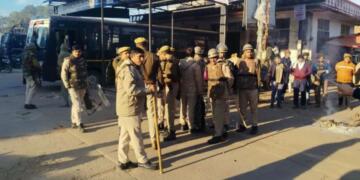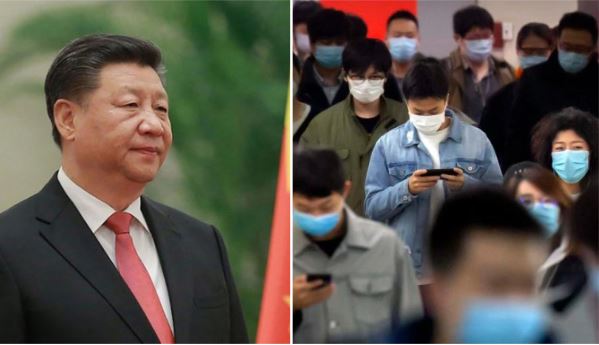Days after China relaxed lockdown measures in Hubei’s capital, Wuhan where the Chinese virus originated causing thousands of deaths and claiming lakhs of infections across the world, a second wave of the Wuhan virus seems to have hit China all over again.
Hit by the Pandemic this time is the Northernmost province of China- Heilongjiang, and the new epicentre of the outbreak seems to be Suifenhe, a border city more than 2,600 kilometres away from Wuhan- the original epicentre of the outbreak.
From March 27 to April 9, Suifenhe reported more than 100 cases, as well 148 asymptomatic cases. China claims that all but three cases are “imported cases”.
However, Heilongjiang residents do not seem to believe the official numbers being conveyed by the Chinese authorities, and they have been insinuating China of downplaying the severity of the COVID-19 outbreak all over again by blaming “imported cases”.
Meanwhile, Suifenhe has started building a makeshift hospital (read “isolation centre”) with 600 beds dedicated to asymptomatic patients. While China has reported only a few hundred cases in Suifenhe, the city itself has been placed under a severe lockdown of the kind that might be imposed in the worst of cases.
70,000 residents of the city have been almost home-quarantined, and only one person from each household can venture out for procuring necessities and that too only once in every three days.
Meanwhile, The Epoch Times, has claimed that it accessed a message by a neighbourhood officer on the Chinese social media app, WeChat emphasising the gravity of the situation.
The message reads, “Does everyone know how serious this is?” It adds, “You have no idea who’s got it and who has not … having no symptoms is even scarier.” It seems that there could be far too many silent carriers who are testing positive for the novel Wuhan virus in the city.
While China has been trying to pin the blame on “imported cases”, the latest lapse within the country seems to have taken place on April 8 when the lockdown in Wuhan was completely lifted despite the city recording a sudden rise in the number of asymptomatic cases recently.
As the Wuhan lockdown was lifted, tens of thousands of people huddled together to leave the epicentre of the deadly outbreak. People flocked to travel in trains and flights departing from the city as the 76-day lockdown got lifted. Days later, another city within China seems to have slipped into a sudden outbreak.
What has also spelled disaster for China is the large number of asymptomatic patients- the silent carriers remaining undecteded. At the start of this month, 40,000 such cases were believed to exist in China. But out of its economic greed, the Communist regime went on to lift lockdowns.
China didn’t even include the asymptomatic cases in its official tally till April 1, and the health officials in the country continuously tried to play down the risk posed by such cases.
Heilongjiang residents meanwhile suspect fouplay. A resident from Harbin, the capital of the Northernmost province says, “If they acknowledged local cases, it would mean that the outbreak is not under control, and ‘imported cases’ would be a convenient excuse.”
He added, “Local officials have been covering it up, they don’t report the true [numbers].” Another Harbin native says that her neighbourhood is under lockdown, including curfew after 10 PM, but she doesn’t dare ask anything because she doesn’t fancy being accused of “not believing in the government.”
There are signs- ominous ones which suggest that Suifenhe might actually turn out to be Wuhan 2.0. The magnitude of lockdown is far more severe than the number of cases China is disclosing which might mean a coverup a lot similar to the one in Wuhan only a few months ago.
The handling of the outbreak is once again shoddy, as those coming back from Russia are being stuffed together in close vicinity that makes the supposed “isolation centres” ticking time bombs.
One local resident says that those coming back from Moscow have been quarantined in local sports arenas. He added that coming back is actually unsafe and explained, “You might not have the virus, but it’s very easy to get infected in a concentrated group. You don’t know who may acquire the virus.”
During the Wuhan virus outbreak, China deflected the blame in collusion with the World Health Organisation (WHO) and with utterly ridiculous conspiracy theories like the US Army troops bringing Coronavirus into China.
Now, as Beijing looks to coverup its failures in Suifenhe, it is looking to pin the entire blame on the “imported cases”. China always had it coming the way it was brushing things under the carpet and overlooking the asymptomatic cases in the country. In all probability, a second wave has already hit China and this could be far more severe than the first one in Wuhan.






























